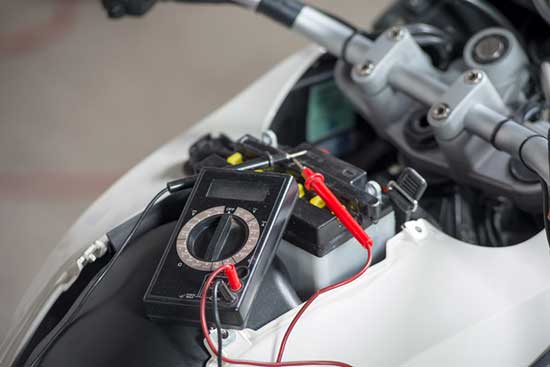Motorcycles operate by using the acceleration of an engine in combination with various mechanical components.
The engine in a motorcycle provides power, and the RPM or revolutions per minute determines how quickly the engine runs.
Understanding the basics of motorcycle RPM can be beneficial for both novice and experienced riders.
RPM plays a vital role in determining the ideal cruising speeds, gear shifts, and idle speeds. In this article, we will explore the basics of motorcycle RPM, the ideal RPM for cruising, idling, and changing gears.
Contents
What is RPM?
The RPM or revolutions per minute indicates the number of times an engine’s crankshaft rotates in a minute.
The engine produces power when its crankshaft rotates. The RPM of a motorcycle engine tells you how quickly the engine is working to produce that power.
The RPM of a motorcycle varies depending on factors like throttle position, gear shift, and road speed.
Throttle Position
The position of the throttle controls the amount of fuel and air that flows into the engine. The more open the throttle is, the more fuel and air are supplied, and the faster the engine will rotate.
Likewise, when the throttle is closed, fuel and airflow are restricted, and the engine slows down.
Gear Shift
In a motorcycle, the gear shift determines how much load the engine has to bear. An engine in the first gear has to work harder than an engine in the fifth gear because of the heavier load.
Thus, the RPM of an engine varies according to the gear shift.
Road Speed
The speed of the motorcycle also impacts the RPM. The faster the motorcycle travels, the more air resistance it encounters, which puts more load on the engine and increases the RPM.
Ideal RPM for Cruising
Cruising RPM is the term used for a steady and comfortable engine speed that allows for efficient fuel consumption and adequate engine performance.
The ideal cruising RPM for a motorcycle depends on the engine displacement and the gear ratio it is in.
For most motorcycles, the cruising RPM will be relatively low as the bike is designed to maintain speeds for long periods without damaging the engine.
- The average cruising RPM for motorcycles with smaller engines like 125cc, will be around 7,000 RPM
- For average-sized motorcycles like Honda CBR, the RPM will be lower, at around 5,000 RPM
- For larger bikes like Harley Davidson, the cruising RPM will be around 3,500 RPM
Ideal RPM for Idling
The idle RPM is the engine speed when the motorcycle is standing still with the engine on. The ideal idle RPM for most modern motorcycles is around 1,200 RPM.
However, this value tends to vary from bike to bike, and it is essential to set it according to the manufacturer’s recommendations.
Ideal RPM for Changing Gears
The RPM range for changing gears is crucial for maintaining the bike’s performance and extending the lifespan of the engine.
Changing gears in the correct RPM range will ensure the engine is not overworked and will make riding smooth.
- In the first gear, the ideal RPM range will be 4000-5000 RPM. This range allows for better acceleration and is perfect for starting from a complete stop.
- In the second gear, an RPM range of 3500-4500 RPM is ideal. This range allows for comfortable cruising while also allowing for fast acceleration if needed.
- For the third gear, an RPM range of 3000-4000 RPM is ideal. This range is perfect for cruising at moderate speeds on the highway.
- In the fourth and fifth gear, an RPM range of 2500-3500 RPM is ideal for smooth highway cruising.
Summary
Understanding the importance of motorcycle RPM is crucial for maintaining vehicle performance and rider safety. RPM is impacted by throttle position, gear shift, and road speed. For cruising, the ideal RPM is lower for small motorcycles and higher for large cruisers.
The ideal idle RPM is around 1,200 RPM. The ideal RPM range for changing gears ensures a smooth ride and extends the life of the engine.
By following the manufacturer’s recommendations and personal experience, riders can optimize their motorcycle RPM according to the type of ride they plan to take, weather conditions, and road type.






